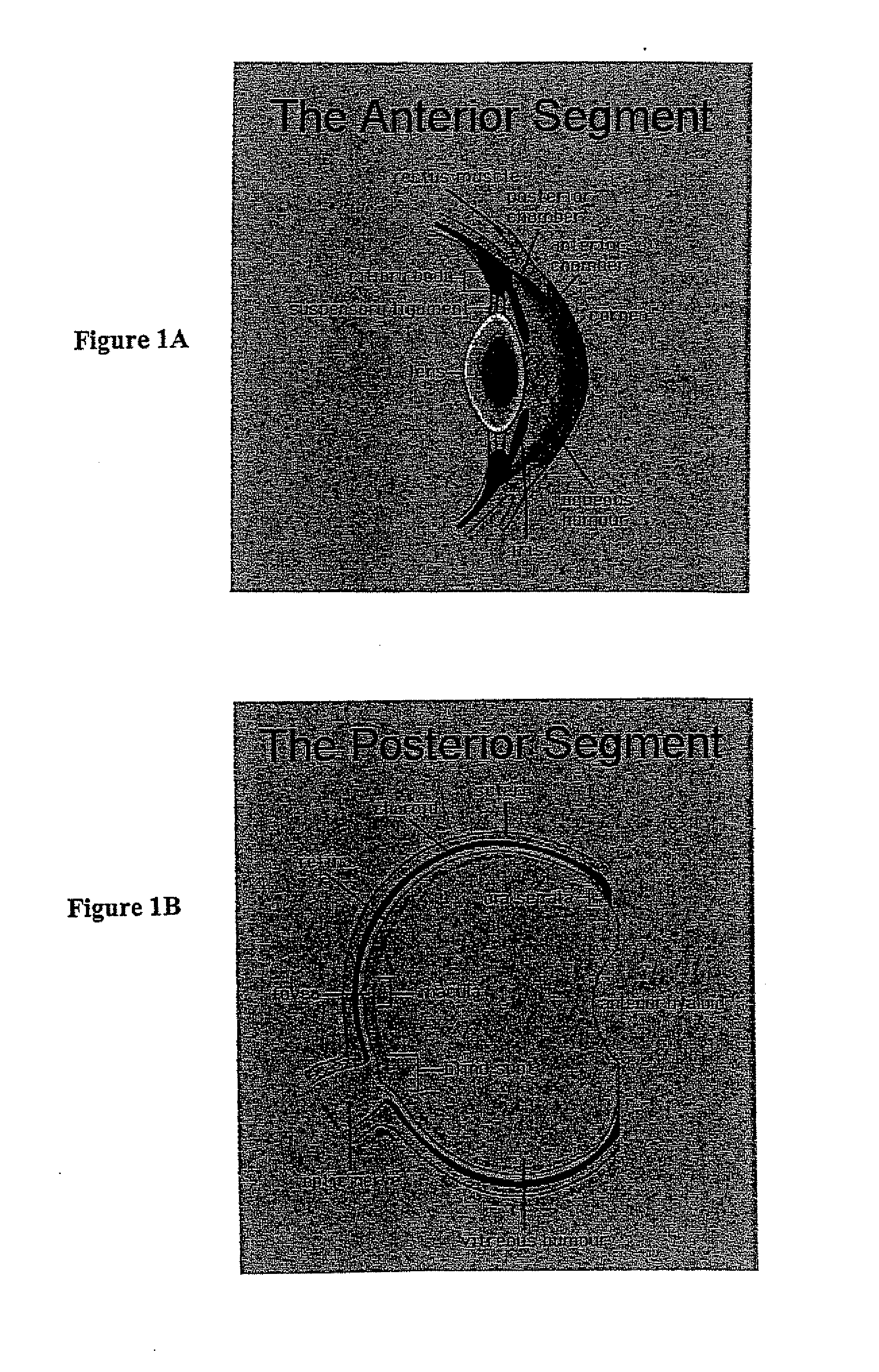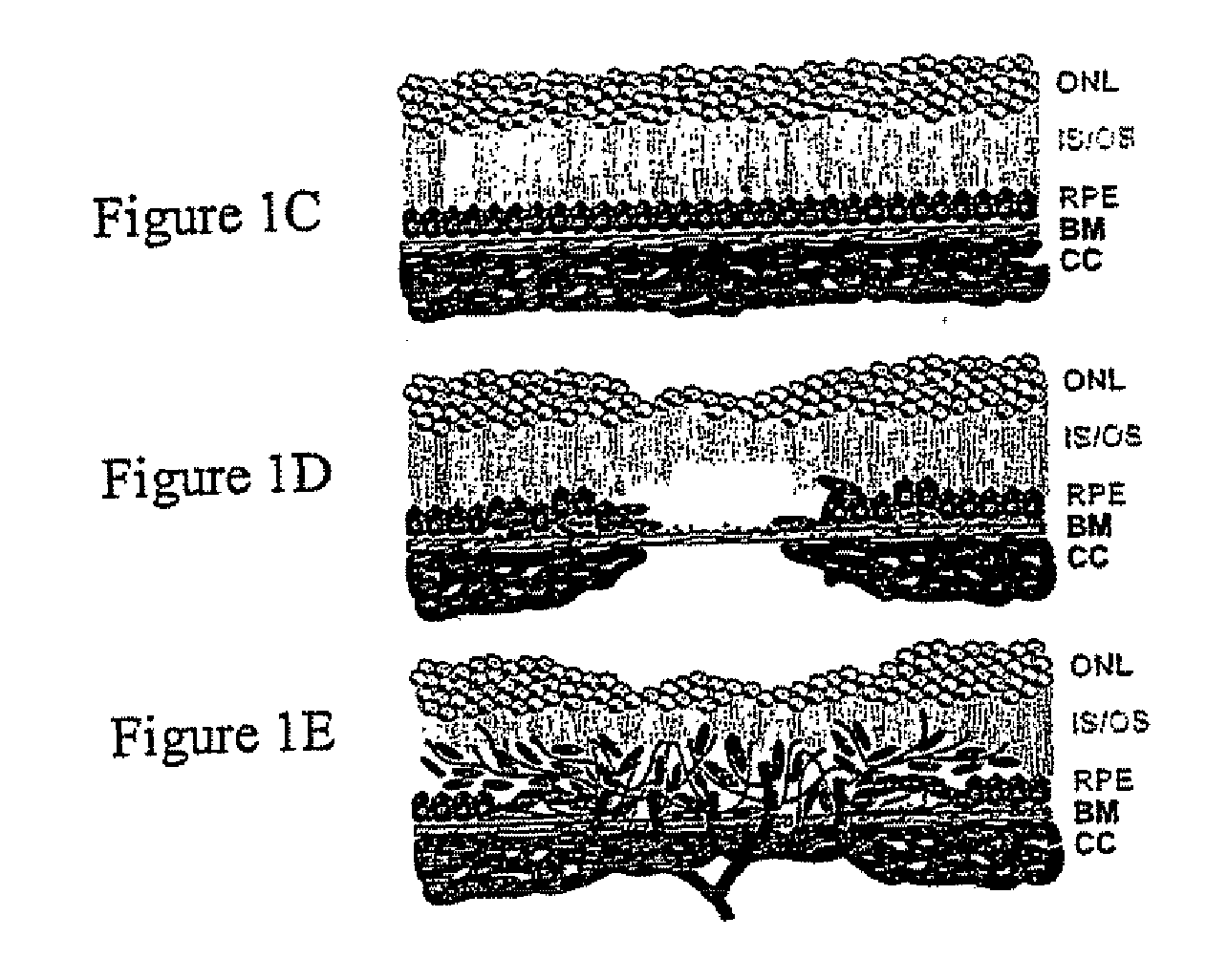Viral Complement Control Proteins for Eye Disorders
a technology of complement control protein and eye disorder, which is applied in the field of eye disorders, can solve the problems of unfavorable clinical application, unfavorable clinical application, and unclear pathogenesis of armd, and achieves the effects of improving clinical application prospects, preventing blindness, and improving clinical application prospects
- Summary
- Abstract
- Description
- Claims
- Application Information
AI Technical Summary
Benefits of technology
Problems solved by technology
Method used
Image
Examples
example 1
Prevention of Choroidal Neovascularization in a Mouse Model by Administration of VCP
[0270]Recombinant VCP is produced in and purified from a Pichia pastoris expression system as described in Sahu, 1998. VCP is dissolved in physiological saline at various concentrations.
[0271]Mice (3 groups, N=10 in each group) are anesthetized and their pupils dilated. Krypton red laser photocoagulation is used to generate multiple (e.g., 3-20) laser spots in each eye as described in Bora, 2003. For the first group, various doses of VCP (e.g., 0.01-100 μg) are administered by injection to one eye in each mouse at days 1 and 4 following laser treatment. The other eye serves as a control. For the second group, various doses of VCP (e.g., 0.01-100 mg / kg) are administered intravenously. Mice in the third group serve as a control. In another experiment, various doses of VCP are administered at different time points following laser treatment.3
[0272]Mice are sacrificed at various time points, perfused with...
example 2
Prevention of Choroidal Neovascularization in a Mouse Model by Administration of VCP
[0273]Materials and Methods
[0274]Recombinant VCP was produced in and purified from a Pichia pastoris expression system as described in Sahu, 1998. VCP was dissolved in physiological saline at various concentrations.
[0275]CNV Induction in Mice
[0276]C57BL / 6 mice (The Jackson Laboratory) were anesthetized with a mixture of ketamine / xylazine (8:1) and the pupils were dilated with a single drop of 1% tropicamide. Krypton red laser photocoagulation (50-μm spot size, 0.05 s duration, 250 mW) will be used to generate laser spots in bothounding the optic nerve by using a hand-held coverslip as a contact lens. Formation of a bubble at the laser spot indicated rupture of Bruch's membrane. Multiple laser spots were generated in each eye.
[0277]Injection of VCP in the Eyes of Mice
[0278]Mice in which CNV has been previously laser-induced were administered VCP solutions by intravitreal injection. Different groups of...
example 3
Treatment with SPICE in a Mouse Model of Age Related Macular Degeneration
[0283]Expression vectors suitable for expression of recombinant SPICE in mammalian or insect cells are generated, and SPICE is produced in and purified from 293T cells or Spodoptera frugiperda cells as described in Rosengard, 2002.
[0284]SPICE is administered to 15, 16, or 18 month old normal mice and age-matched mice deficient in Ccl-2 and / or Ccr-2 (Ambati, et al.). Administration is performed by injection to one eye. The other eye serves as a control. In another experiment SPICE is administered intravenously. Various doses (as in Example 1) and treatment regimens are used. For example, in some groups SPICE is injected every 3 days. In other groups SPICE is injected weekly. The mice are sacrificed at various time points and their eyes are processed and analyzed as described in Example 2. The ability of SPICE to prevent, inhibit, and / or treat CNV or other features of ARMD such as photoreceptor atrophy, drusen an...
PUM
| Property | Measurement | Unit |
|---|---|---|
| size | aaaaa | aaaaa |
| diameter | aaaaa | aaaaa |
| time | aaaaa | aaaaa |
Abstract
Description
Claims
Application Information
 Login to View More
Login to View More - R&D
- Intellectual Property
- Life Sciences
- Materials
- Tech Scout
- Unparalleled Data Quality
- Higher Quality Content
- 60% Fewer Hallucinations
Browse by: Latest US Patents, China's latest patents, Technical Efficacy Thesaurus, Application Domain, Technology Topic, Popular Technical Reports.
© 2025 PatSnap. All rights reserved.Legal|Privacy policy|Modern Slavery Act Transparency Statement|Sitemap|About US| Contact US: help@patsnap.com



